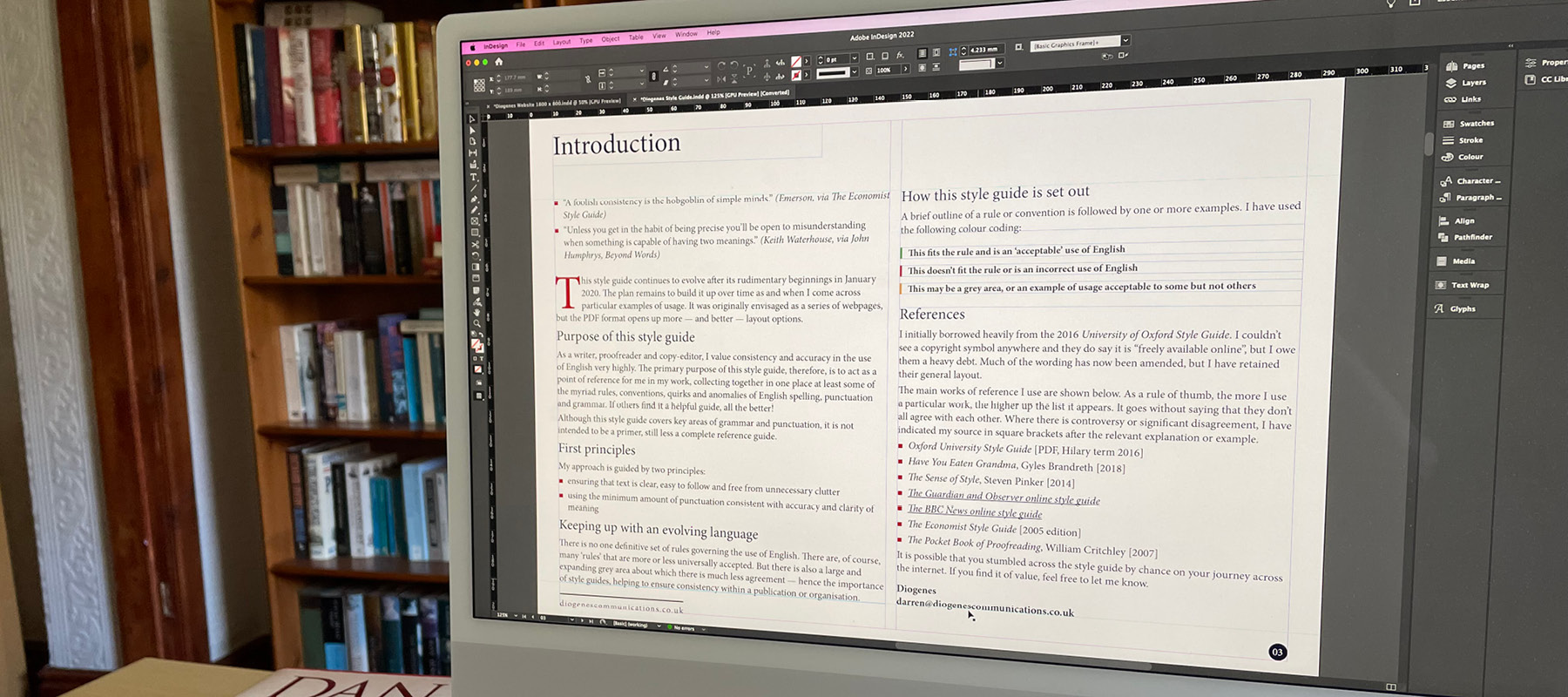Style Guide
A foolish consistency is the hobgoblin of simple minds.
Ralph Waldo Emerson, via The Economist Style Guide
Unless you get in the habit of being precise you’ll be open to misunderstanding when something is capable of having two meanings.
Keith Waterhouse, via John Humphrys, Beyond Words
This is a style guide that I started to put together in January 2020. The plan is to gradually build it up over time as and when I come across particular examples of usage or questions relating to the use of English.
As a freelance proofreader and copy-editor, I value consistency and accuracy in the use of English very highly. Language evolves all the time, as do its conventions. There is no one definitive set of rules governing all English writing in all places, across all formats and at all times — hence the importance of style guides. For example, the paragraph above contains a split infinitive — “to gradually build it up…”. What does my style guide say about those?
The primary purpose of the style guide, therefore, is to act as a point of reference for me in my work and in my own writing, collecting together in one place at least some of the myriad rules, conventions, quirks and anomalies of English spelling, punctuation and grammar.
Click on the image below to read and/or download the style guide. It is updated regularly. Don’t forget to check back to make sure you have the latest version.





